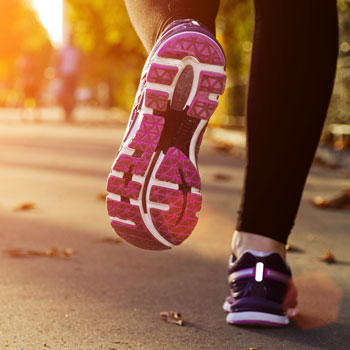Cold Weather is Coming - Tips for Keeping Up Your Exercise Regimen
 You don’t have to wait until spring to get started exercising and you don’t have to spend the fall and winter months in a gym or in your mom’s basement on the treadmill.
You don’t have to wait until spring to get started exercising and you don’t have to spend the fall and winter months in a gym or in your mom’s basement on the treadmill.
Almost anyone can exercise safely in the cold. Certainly, those of you with asthma, heart problems or Raynaud’s disease (a disease where arteries, usually in your fingers and toes, go into vasospasm when exposed to cold or stress, temporarily limiting blood supply) should consult their physician before beginning an exercise program, especially in the cold.
Here are a few tips for staying safe when exercising in cold weather.
Safety first – Know how to avoid and identify frostbite and hypothermia signs and symptoms.
- Frostbite – Usually affects unprotected skin of the hands and face or the toes. It begins as cold skin and tingling, and progresses to numbness, skin discoloration, hard or waxy-looking skin. A person might complain of difficulty with fine motor tasks and blistering after rewarming. That’s not good.
- Hypothermia – Abnormally low body temperature. Symptoms include: cold hands/ feet, pale skin, shivering, dizziness, hunger, nausea, difficulty speaking, confusion, increased heart rate and clumsiness, slurred speech, confusion, lack of concern about one’s condition, shallow breathing and loss of consciousness. CALL 911 immediately!
Check the weather.
- If it is going to be well below Zero Fahrenheit (0® F) and a wind chill, perhaps you can try some indoor exercises: squats, push-ups, walking up your steps, lunges – really anything to keep you off the couch.
- Exercising when it is mildly cold - go for it. Exercising when it is icy - consider exercising inside today to avoid injury.
Layer up. It is important to stay warm and not get wet. Avoid cotton, which will hold moisture and reduce your core temperature. Keeping your body temperature at or slightly above 98.6® F will help drive blood down your legs helping to keep your feet warm.
- Wear a polypropylene bottom layer or other material to wick moisture away from your skin. Water is a great conductor and will quickly cool your core temperature, while air is a poor conductor and will hold heat close to your skin.
- Use fleece/ wool as a second layer to insulate you. Lean individuals may need more insulation.
- Finish with a water-resistant outer layer that is breathable.
- Wear a hat, gloves, and protect your face.
- As temperatures drop, any exposed skin is at a higher risk of frostbite.
- A scarf or special face mask will help protect your skin and warm the air you breathe to help protect your lungs.
While I have read a variety of articles stating how much heat one losses through their head, I think we would all agree it is less if you have a hat on, so wear a hat. It will actually help keep your feet warmer.
PART TWO
Exercise Precaution when Exercising in Cold Weather
This is the second part in a two-part series about safely exercising in cold weather.
The temperatures in fall and winter can fluctuate between the 40s and the teens, so outdoor enthusiasts need to be prepared for the conditions. In addition to running wear, also make sure to take extra time to exercise and follow these simple safety tips.
Change your expectations.
- If you are a first-time cold-weather exerciser, it will take multiple times to acclimate, so know that next time will be a little easier.
- Beating your best 5K time will be a little harder when it is below freezing, so relax the pace and enjoy the different sights and smells of a cold weather run.
- Make sure to warm-up.
- You may need to take extra time to warm up so your muscles and joints are ready for the activity. This is true for running, walking, or shoveling snow.
- Buddy up.
- Having a friend along for the exercise makes you more likely to go and keeps both of you safer. An especially great idea if your buddy is helping shovel your driveway.
- Just like summer.
- Wear sunscreen during the day.
- Protect your eyes and wear sunglasses. The sun off the snow can be brutal.
- Stay hydrated, before, during and after exercise, even if you don’t feel thirsty.
- Reflective gear is a safety must if you are out at night. Remember it gets dark a lot earlier in the winter.
- Change out of your exercise clothes when you finish.
- Even if you don’t shower right away, changing into dry clothes will help increase your body temperature.
- Save it for the lodge.
- Alcohol increases heat loss and impairs judgment – not what one needs while snowboarding.
- Wait until you get back home for your cocktail; then you can enjoy it while you exaggerate your split times to all your friends.
Remember, health is not just about your weight or how much you lift, it is about balance. Diet, activity, sleep – you need to think about all aspects to truly live a healthy life.
